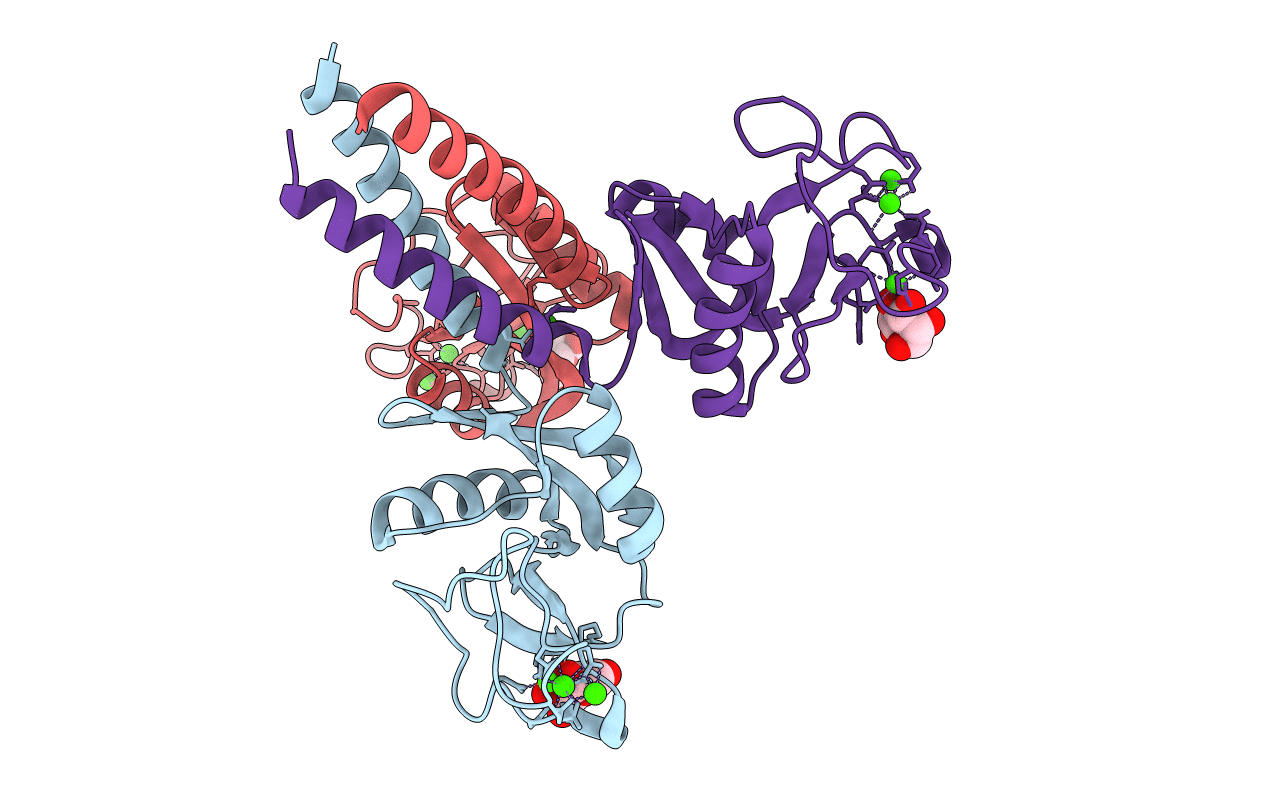
Deposition Date
2009-08-06
Release Date
2009-11-17
Last Version Date
2024-10-09
Entry Detail
PDB ID:
3IKQ
Keywords:
Title:
Crystal structure of alpha 1-2 mannobiose bound trimeric human lung surfactant protein D
Biological Source:
Source Organism:
Homo sapiens (Taxon ID: 9606)
Host Organism:
Method Details:
Experimental Method:
Resolution:
2.25 Å
R-Value Free:
0.23
R-Value Work:
0.20
Space Group:
P 1 21 1


